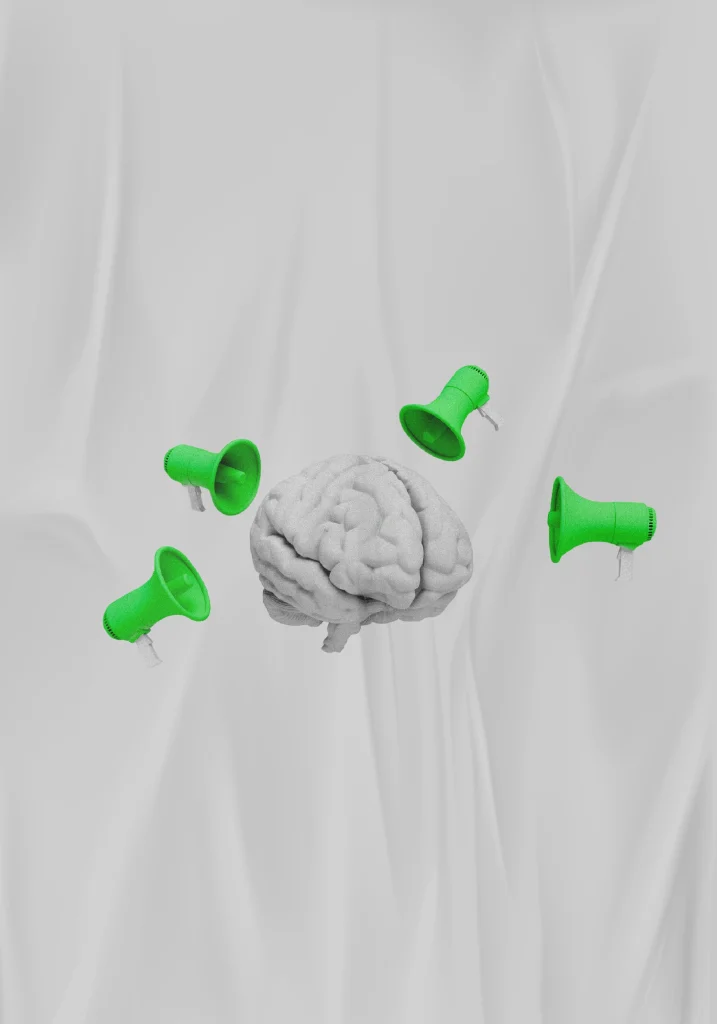These days, in the era of technology, e-commerce has taken off in a significant way, and with AI backing it, the landscape has undergone a complete transformation. What if your go-to shopping app can now read your mind? Shocking, isn’t it? But due to AI-based shopping experiences and changing psychology of e-commerce, neuromarketing is now enabling us to crack the code of consumer intent like never before.
The union of neuromarketing and AI revolutionizes e-commerce by studying unconscious consumer feedback to produce highly personalized and emotionally engaging experiences. This enables optimal product suggestions, site designs, and ad campaigns that subtly shape buying choices.
What is Neuromarketing in E-Commerce?
NeuroMarketing is a modern marketing technology that combines the ideas of neuroscience, psychology, and marketing. In contrast to traditional marketing, it doesn’t depend on customer surveys or predetermined responses. Rather, it deals more with the unconscious preferences and decision patterns that naturally occur within a person’s mind. That’s why neuro-marketing employs these natural human reactions to drive purchasing decisions, quite possibly without the individual even knowing it.
This makes neuromarketing highly relevant in the digital shopping environment. A consumer’s thoughts, feelings, and actions are all closely related to the way he/she behave in the digital space. And by knowing how the human brain functions, brands can predict natural likes and dislikes more accurately — because, come on, it’s the brain behind most of our choices.
It is here as well that conventional marketing fails — it just can’t reach these deep, primal levels of decision-making. That’s why, in the modern digital age, neuromarketing represents an even stronger and more appropriate methodology, opening the door to genuine e-commerce innovation through a greater understanding of the psychology of e-commerce.
The Role of AI in Modern E-Commerce
The fast-paced changing AI has turned out to be an absolute game-changer for companies nowadays, particularly for those in the online industry. The system that used to merely say, “customers who purchased this bought that,” has now developed into an intelligent aide that could foretell customer requirements independently. Displaying the proper advertisement to the proper person at the proper time has thereby been made easier than before. Because such specially focused ads can decisively impact buying decisions, it is no wonder that AI is being extensively applied in all industries by 2025.
If we observe AI Trends 2025, the biggest change is the emergence of conversational commerce. It’s gaining popularity among customers due to the fact that it provides a more seamless, personalized method of shopping. Language barriers disappear, and so the experience is smoother and accessible, and brands are getting more and more data without any hassle.
Amazon is maybe the best-known and simplest illustration of how AI and neuromarketing meet in practice. By monitoring your previous browsing, purchases, search habits, and even other customers’ habits with similar buying behaviour, Amazon skillfully suggests the most suitable products that you often don’t even know you need yet.
Tools and Technologies Used in Neuromarketing
Let’s understand the tools and technologies that are used in this fast-spreading revolution of AI-driven shopping experience.
- Eye tracking: This technology tracks the eye movement while a person is using a smart device. It can precisely measure where the person is looking, their gazing patterns, and eye movements. Visual attention insights can be measured with the help of this technology.
- Facial expression analysis: This process is used for identifying and interpreting human emotions and intentions. It is executed by analysing visible movements and configurations of facial muscles. Computer vision algorithms often help in this process.
The Effect of The Psychology of E-Commerce on Shopping
Psychology of e-commerce is at the center of the shopping experience powered by AI. It is the science of human feelings, thoughts, and behaviors that drive online buying choices.
Most individuals are impulse shoppers, whereas most think that the trust indicators formed by the online merchant through assistance from the design are secure. The layout, colour, UX design, and even product positioning affect customer behaviour. These intelligent marketing strategies are assisting AI in breaking behavioural patterns. AI in the contemporary world is so smart that it is capable of testing and optimizing these psychological triggers on a real-time basis. This will enable AI to develop a stronger consumer intent comprehension and provide extremely personalized, conversion-based shopping experiences. This will subsequently drive sales, impacting impulse purchasing.
Conclusion
In summary, the integration of AI and neuromarketing is revolutionizing the face of e-commerce — from hypothesis to insight, from generic communication to hyper-personalized experiences. Through the decoding of unconscious signals and use of real-time information, brands are no longer making educated guesses about what people need; they’re knowing it with scientific accuracy. This formidable pairing is not only enhancing product selling but, more importantly, the way customers feel during purchase. As we go forward, one thing is for sure: in the e-commerce future, the true cart is in the mind of the consumer.
Frequently Asked Questions
What is neuromarketing in e-commerce?
Neuromarketing in e-commerce applies neuroscience and psychology to understand the way people decide to shop online. It concentrates on intuitive responses instead of explicit feedback. This assists brands to create experiences that tend towards a purchase naturally. It’s more about shaping emotions and behavior through more intelligent, data-driven approaches.
Can AI predict what customers will buy?
Yes, AI can forecast buying behavior on the basis of user data such as browsing history, past shopping and search patterns. It identifies patterns and recommends products based on individual tastes. It often knows what you may want even before you look for it. This results in more effective recommendations and greater conversion prospects.
What tools are used in neuromarketing?
Neuromarketing employs mechanisms such as eye tracking, face analysis, and heat maps to examine the reactions of consumers. EEGs and biometric sensors are also employed to monitor brain function and emotion. These instruments show what wins over attention and drives decisions. Brands employ such information to enhance design, advertisements, and general shopping experiences.
How do brands use brain data in marketing?
Brands apply brain data to know emotional triggers and adjust marketing based on this. It assists in developing ads, content, and layouts that resonate on a deeper level. This renders campaigns more influential and bespoke. The intention is to cause decision-making without the customer even noticing it.



